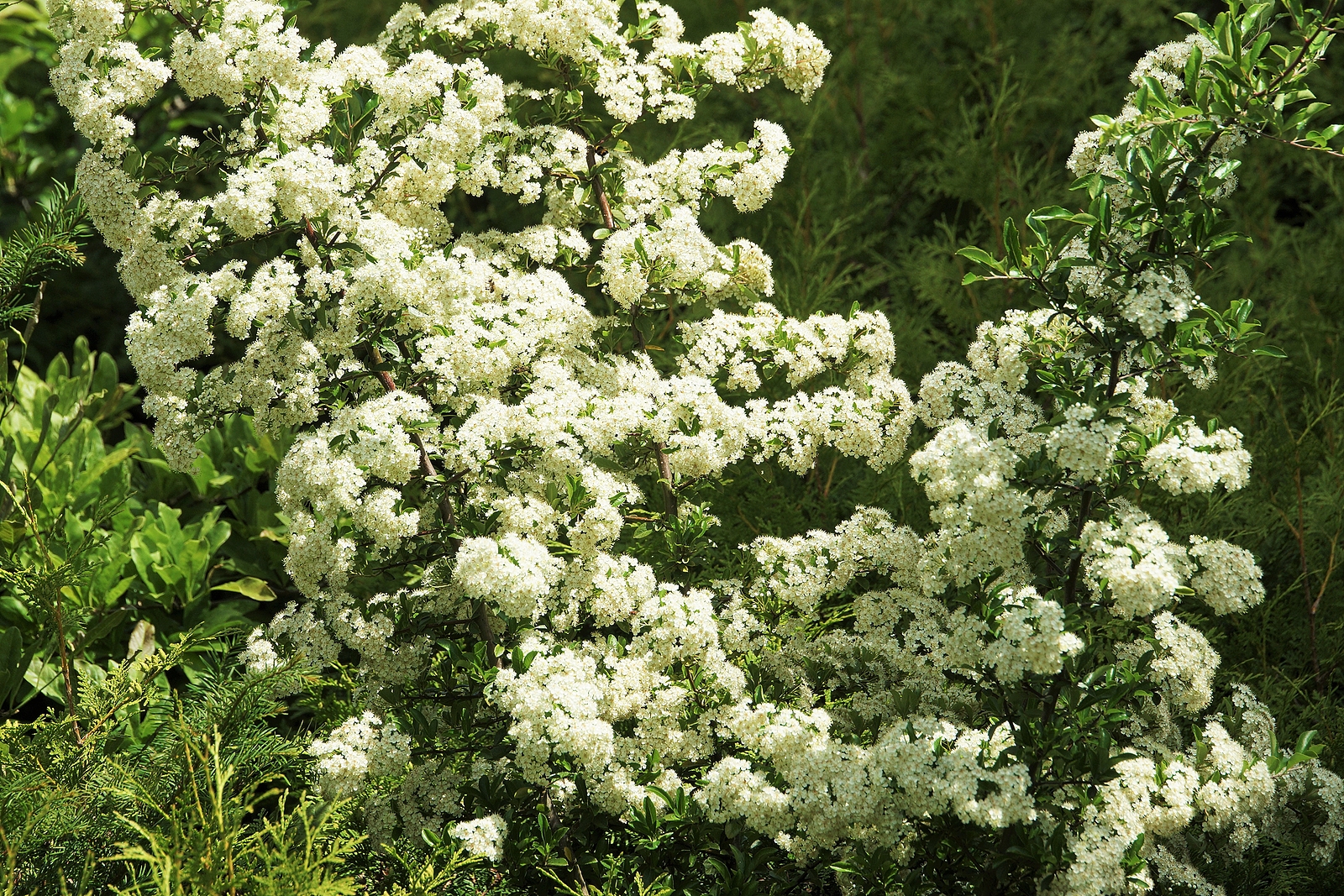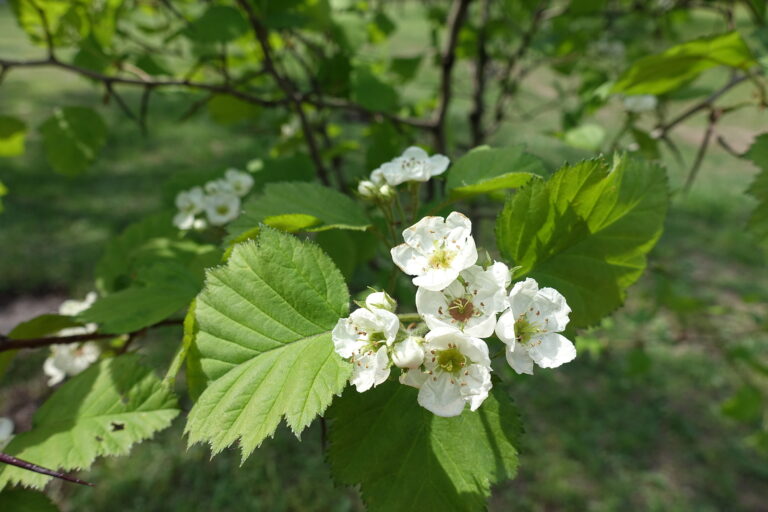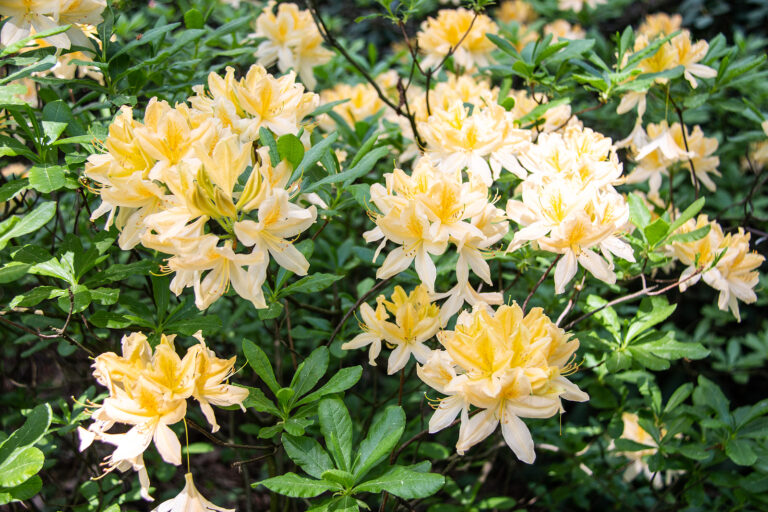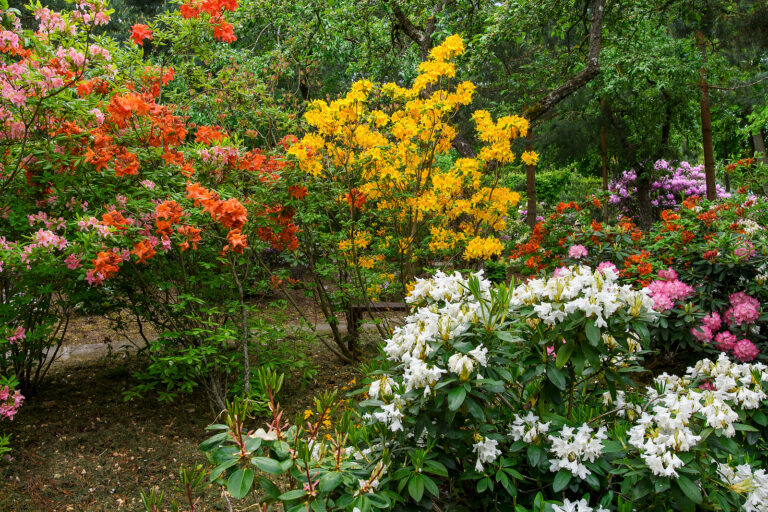How to Grow Sea Buckthorn — Hippophae
Hippophae–commonly called sea buckthorn-is an open, mounding shrub usually grown for its linear, silvery-gray-green leaves and spherical orange fruits. While the flowers are usually inconspicuous, the fruits are showy.
Hippophae tolerates low temperatures, wind, poor soil, and salt spray. It is a good screening or informal hedge plant for difficult situations.
Grow Hippophae in a mixed or shrub border, in a wild garden, or as specimens plants. In coastal areas, Hippohae can be used as a windbreak, hedging, or to stabilize sand dunes.
Hippophae is a genus of three species. It is native to coastal dunes and riverbanks from Europe into Asia.
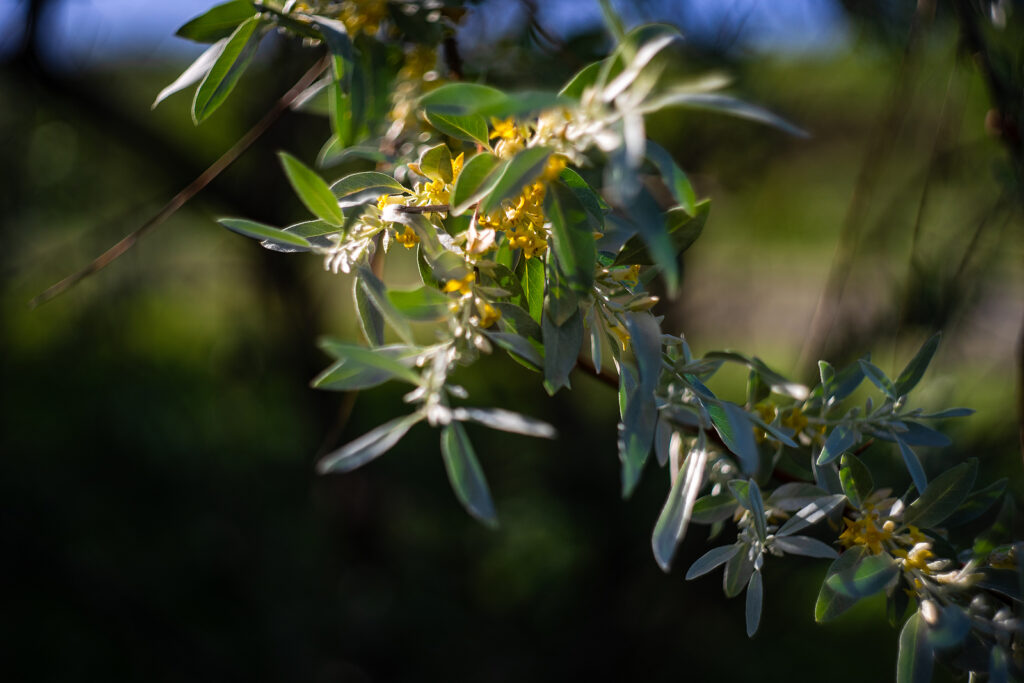
Get to know Hippophae
- Plant type: Deciduous, dioecious shrubs and trees
- Growing zones and range: Zones 3 to 7
- Hardiness: Hardy to Zone 3
- Height and width: 8-12 feet (2.4-3.7m)
- Growth rate: Fast
- Form and habit: Male plants grow upright; female plants spread
- Foliage: Leave are silvery green, slender and about 2 inches (5.1cm) long; branches are thorny
- Flowers: Inconspicuous flowers on bare branches
- Fruits: In the fall, the female plants bear enormous quantities of .3 inch bright orange berries along their stems; both male and female plants are necessary for fruit production; the fruit, disliked by birds, stays on the plant through winter until early spring
- Bloom time: Summer
- Uses: Screening, seaside gardens, roadside plantings, stabilizing dunes and riverbanks, erosion control; looks best in semiwild setting; lends color to naturalized areas
- Common name: Buckthorn
- Botanical name: Hippophae
- Family name: Elaeagnaceae
- Origin: Costal areas and riverbanks in Asia and Europe
Where to plant Hippophae
- Plant Hippophae in full sun.
- Plant Hippophae in well-drained soil; spread faster in poor soil than fertile soil; does best with some organic matter keep its roots cool.
- Hippophae tolerates low temperatures, wind, and salt.
When to plant Hippophae
- Set container-grown Hippophae in the garden in spring or autumn.
Planting and spacing Hippophae
- To ensure good berry production, plant one male Hippophae to every six females.
How to water and feed Hippophae
- Give Hippophae regular to moderate water.
- Feed Hippophae with an all-purpose organic fertilizer in spring.
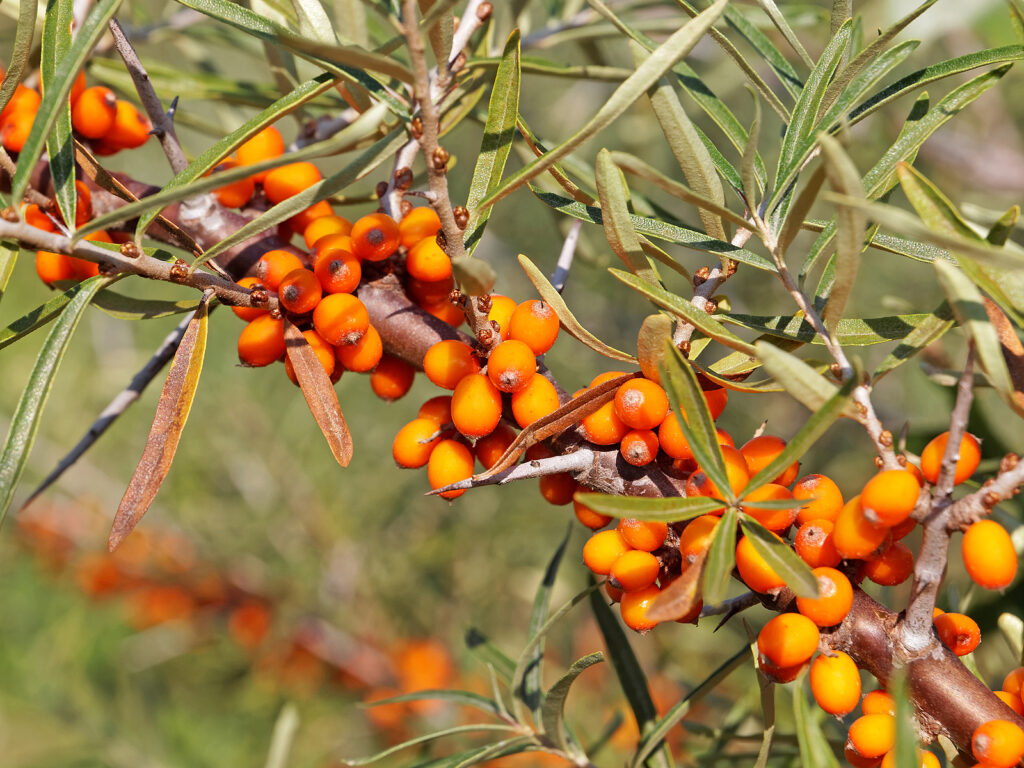
How to care for Hippophae
- Hippophae rarely needs pruning.
Hippophae pests and diseases
- Hippophae is rarely bothered by pests or diseases.
Hippophae propagation
- New Hippophae plants can be started from underground stems, or suckers, from root cuttings or by forcing a branch to grow roots by the method known as ground layering.
- The offspring of such vegetation reproduction will be the same sex as the parent plant.
Hippophae varieties to grow
- Hippophae rhamnoides, Sea buckthorn, variable in size but averaging 20 feet (6.1m) tall and wide, this large shrub or small tree has an irregular open shape and a suckering tendency. The 1-3 inch (2.5-7.6cm) willowlike leaves are gray-green and silvery, borne on spiny branches. Inconspicuous yellow-green spring flowers give way to bright orange, round to oval berries on the females. Zone 3 to 8.

